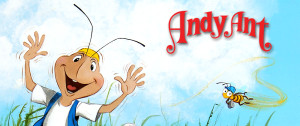
Story Writing Hints
By
Gerald D. O’Nan
Author of the
Adventures of Andy Ant Books
(Note: I will try to give you hints and ideas about writing stories using the 8 books in The Adventures of Andy Ant as examples. Having a set of the Andy Ant books available will help you understand the context better, but it isn’t necessary if you have a good imagination.)
Publishing – Protecting Your Story
As a part of writing your story, make sure you protect your original written thoughts. Take a look at any book in your library and you will find a copyright page. Your stories should be no different. At a minimum, your copyright page should use the word “copyright” together with the copyright symbol “©”, the year, and your name. You can use additional language – similar or identical to what I have placed on each page (see below) – to identify your rights.
Title 17 of the United States Code covers the copyright laws of the United States. I am not a copyright attorney and do not profess to provide copyright advice. Nevertheless, I always believed that it was important to do everything you can to protect your original work effort.
I have a vivid memory of an incident my cousin had with a school teacher. My cousin, Tom, had written a detailed account of life in a small mining town in South Western Colorado. Part of Tom’s research included interviews with an elderly family doctor who had lived in that small town in the early days of his medical practice. This doctor recounted his first-hand experiences with the gold and silver minors and even the prostitutes who frequented the small town. Tom submitted his research paper for the class assignment. Months later he learned that the teacher had published the paper as his own.
I don’t believe this is an isolated example of having your hard work “stolen.” In my cousin’s situation, the teacher denied that Tom even had any involvement in the written product. Tom had not put any copyright protection on the paper, and even had he done so, the teacher could have denied that it was Tom’s work. But there is a simple process to protect your work product short of filing a document with the US Copyright Office:
(1) Put the copyright protection on your document;
(2) Insert the document into an envelope and address it to yourself;
(3) Seal the document and write your signature across the sealed flap;
(4) Put clear, heavy-duty tape across the sealed flap;
(5) Mail the envelope to yourself BUT do not open it. The contents of your sealed envelope will help determine your ownership and the date you claimed ownership, via the postmark on the envelope.
Legitimate publishers are quite familiar with copyright laws and will normally do the official filing for you. But, be on guard for those unscrupulous publishers who function with less than stellar integrity.
With the use of the internet, you can electronically submit your manuscript to many publishers. Publishers often have submission “rules” that you should look for and follow carefully.
If you are unable to find a publisher who wants to publish and market your book, you also have the option of finding a publisher who will take care of certain legal issues, like copyrighting, but only print the books while you have the primary/sole responsibility of marketing the book. This form of publishing is commonly referred to as Vanity Publishing.
Another avenue for publishing your book is the self-publishing route. Self-publishing is similar to Vanity Publishing with the exception that you do all necessary legal work, including submitting the manuscript to the US Copyright Office.
This topic is worthy of much more discussion, and I will attempt to cover some of that information in the next hint – including some of the major errors my brother and I made.
Copyright © 2023 by Gerald D. O’Nan All Rights Reserved. No part of this document may be used or reproduced by any means, graphic, electronic, or mechanical, including photocopying, recording, taping, or by any information storage retrieval system without the expressed written permission of the author except in the case of brief quotations embodied in critical articles and reviews.



